Explore Edward Norton’s Motherless Brooklyn , Where NYC Is a Star
Popular in the 1940s and ’50s, the genre known as film noir is characterized by its dramatic use of dark and light, intrigue and suspense, and just so happens to be a perfect genre for big-city backdrops, fast-talking gumshoe detectives, and classic Dashiell Hammett and Raymond Chandler tales. Typically shot on location, the style is immortalized in famous Los Angeles–set neo-noirs such as Chinatown, L.A. Confidential, and Mulholland Falls, while classic-era noirs like Laura, Sweet Smell of Success, and Sorry, Wrong Number depict New York City in a similar vein.
Which is precisely where director and star Edward Norton’s latest film, Motherless Brooklyn (Warner Bros.), which premieres November 1, takes place. Based on an adaptation of the Jonathan Lethem novel, it tells the story of a private detective, Lionel Essrog (Norton), who suffers from Tourette’s Syndrome and is investigating the murder of his friend, detective-agency owner Frank Minna (Bruce Willis).
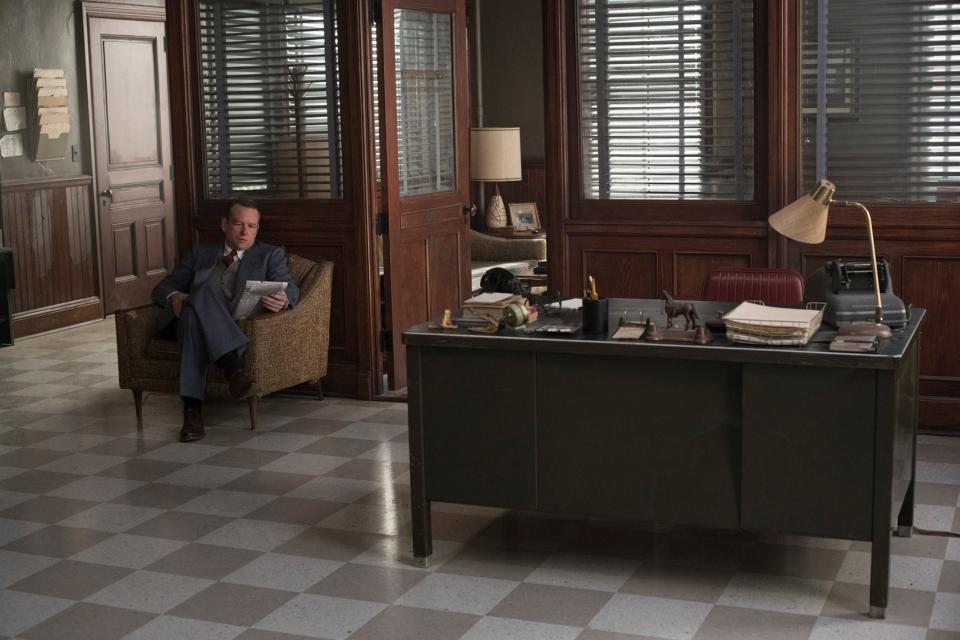
MOTHERLESS BROOKLYN
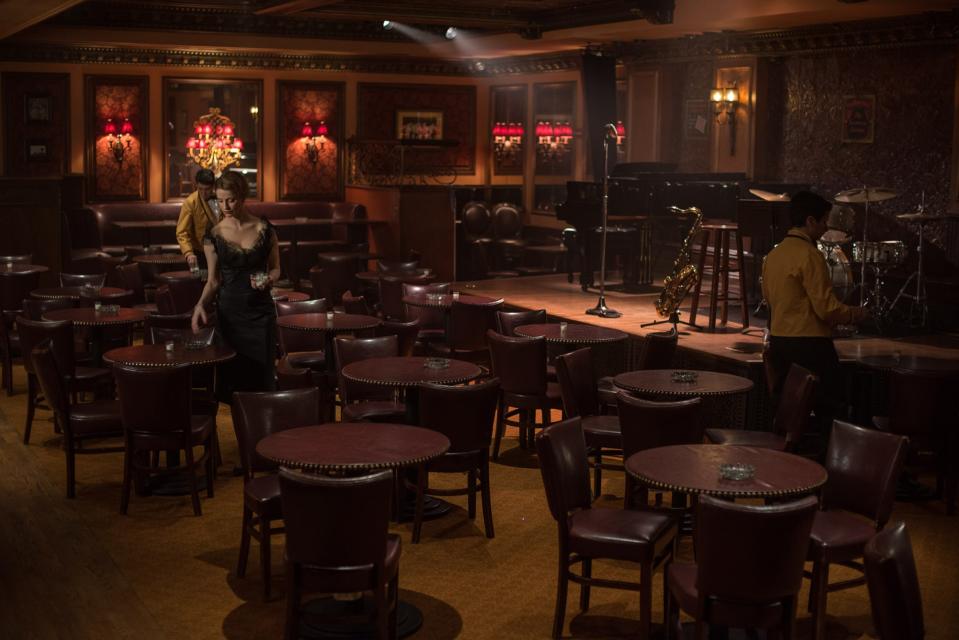
MOTHERLESS BROOKLYN
Essrog’s investigations take him everywhere from boozy nightclubs in Harlem and decaying slums in Brooklyn to the opulent Manhattan offices of the city’s movers and shakers. Responsible for the ’50s-era settings was production designer Beth Mickle, who looked to the retro-styled films Chinatown and L.A. Confidential and the black-and-white classic The Maltese Falcon for inspiration. “Visually, Chinatown was really spot-on and we didn’t want to get too overly nostalgic; we wanted it to be more noir,” she says.
Motherless Brooklyn was largely filmed on location and at Gold Coast Studios in Bethpage, New York. As such, eagle-eyed moviegoers may recognize the Plaza Hotel, Academy of Music, Feinstein’s/54 Below supper club, a prominent downtown courthouse, and the New York Public Library's main Midtown branch. “We really used the city and shot all over New York, Brooklyn, and Harlem,” the designer says. Laying the groundwork of the seedy side of the city on her previous show, HBO’s The Deuce, she details, “As the film explores the development and modernization of New York City, we used every opportunity to highlight and celebrate the city’s iconic architectural treasures.”
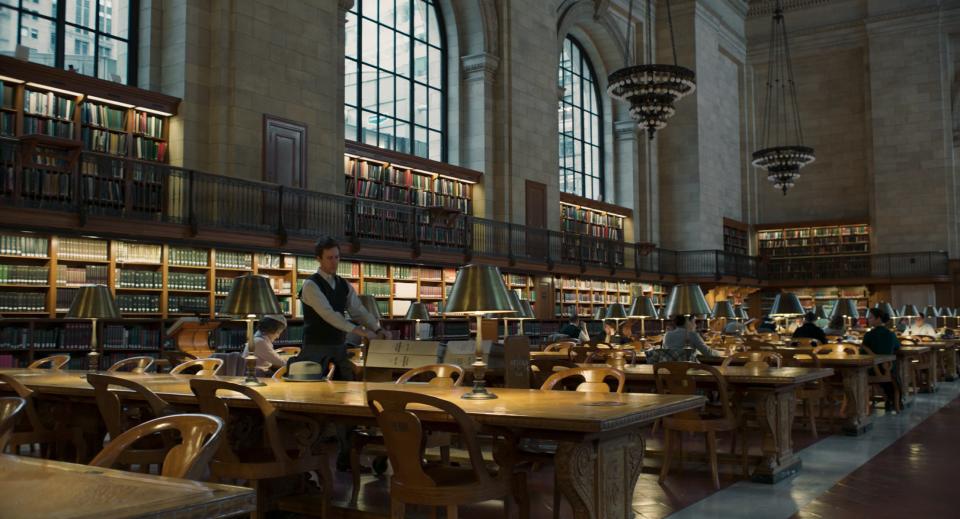
MOTHERLESS BROOKLYN
Harlem, in particular, was ideal for the film’s period scenes. “The architecture is really well preserved there, and there is not a big infiltration of big-box stores and condos,” says Mickle, who would occasionally encounter modern ads and have to cover them with a vintage newsstand. Being a longtime resident of Harlem came in handy, as she explains: “I took a million photos of the backsides of brownstones and matched the façades and fire escapes [for the film’s exterior sets],” while apartment and detective agency interiors were built on a soundstage.
For the long-since-razed Penn Station backdrop, Mickle looked to visual effects, and the scenes set there were ultimately shot on a 20,000-square-foot soundstage. Researching the station’s period look of the time at the Library of Congress—along with a scene from the 1955 Marilyn Monroe film The Seven Year Itch—Mickle and her team matched the original concrete-and-glass-block flooring and reproduced the pattern onto linoleum rolls.
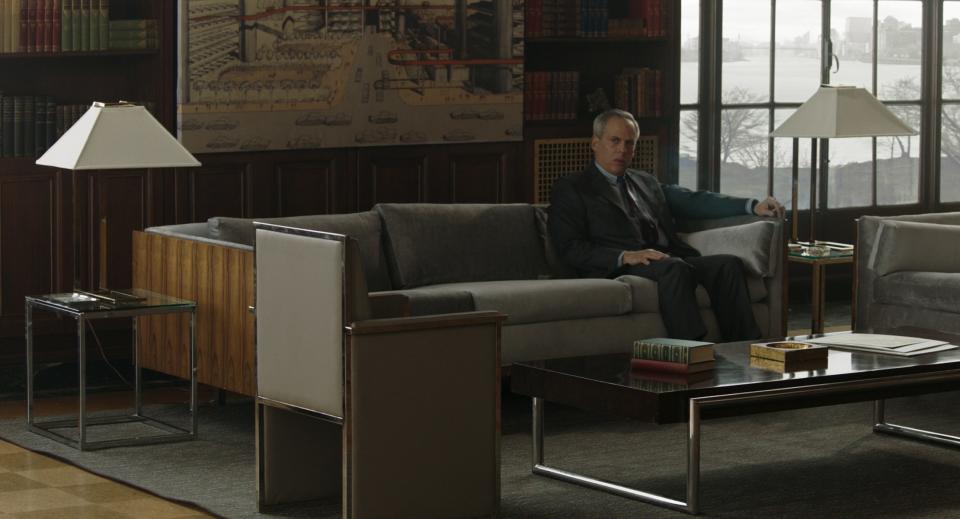
MOTHERLESS BROOKLYN
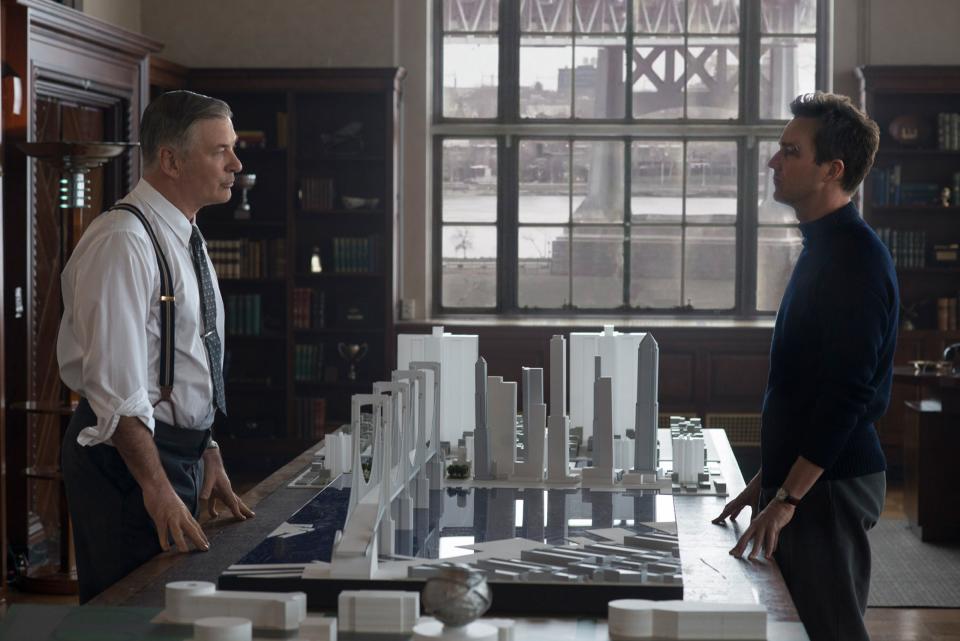
MOTHERLESS BROOKLYN
The designer also created a color palette to reflect the power and socioeconomic status of certain characters. These translated into interiors for those moving out of their homes because of gentrification (muted dark brown tones) and for the larger-than-life developer Moses Randolph’s (Alec Baldwin) bright, gilded world. “Since he was a powerful developer, we used these 16-foot giant arching windows, stone, marble, and slick surfaces for his interiors,” she says. Her favorite set was his indoor pool, which she discovered at the Hansborough Recreation Center on 134th Street in Manhattan while researching bathhouses. “I found this photo of a beautiful indoor pool with gorgeous mosaic tiles in gold, blue, and teal. It was a complete architectural treasure.”
The designer and her set decorator, Kara Zeigon, looked to a variety of sources for period-appropriate furnishings. “I am a huge fan of beautiful historical wallpapers,” Mickle says, “and we found period papers at Hannah’s Treasure, located in the Midwest.” They also sourced antiques on eBay, Chairish, 1stdibs, Eclectic/Encore Props, Newel Antiques, antique shops in upstate New York’s Hudson Valley, and estate sales. Norton also provided direction. “He has such a keen eye and really knows interior design, furniture design, and architects,” the designer comments. “I would show him examples of desks and gave him a few options—he really knows what he likes and what he dislikes.”
Originally Appeared on Architectural Digest

